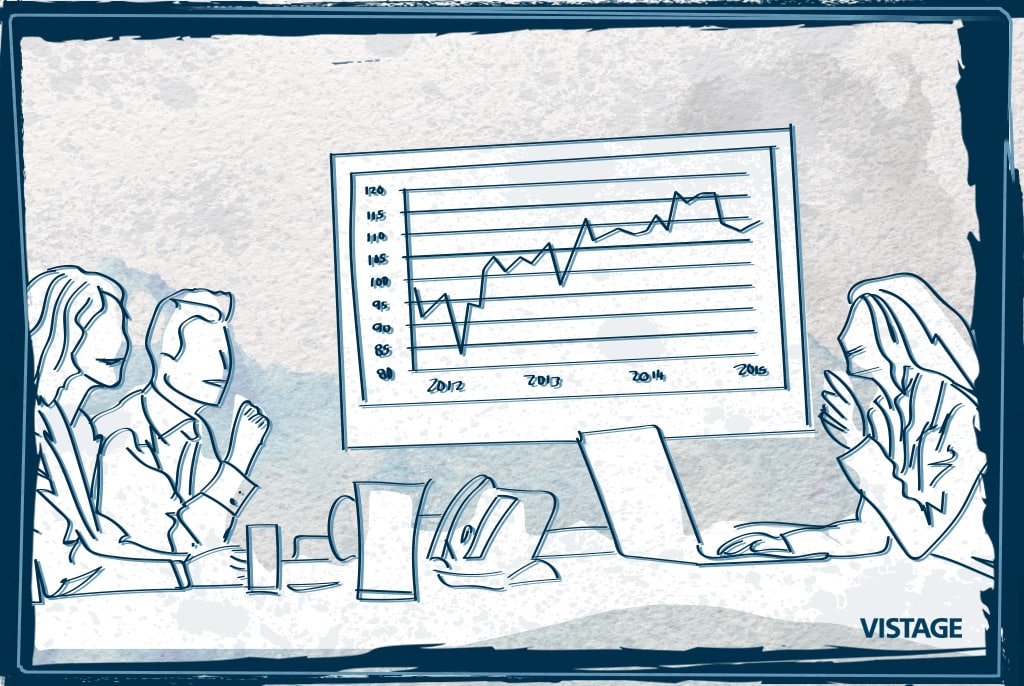What determines the value of your business

Whether or not you studied finance, you know that there are endless factors that someone from the outside will use to put a value on your business. In the end, those factors will create a number on paper — with which you may or may not agree.
The importance of the factors will vary based on the needs of the buyer and the timing in the market. Some buyers will value hard assets or particular customers or product categories. The market could be really good for sellers overall — or just in your industry — or could be tough across the board. No matter how sound a valuation theory or your analysis is, companies are valued in the real world, by real people with varied motives, amidst a dynamic market and uncertain future that no one can perfectly predict.
The only way to address this dynamic environment is for entrepreneurs to build the best business they can, consistently taking the pulse with real-world investors and potential buyers, and painting a picture of the company’s future that is both expansive and credible.
By the time you’ve decided to actively sell your business or raise a round of financing, you have to take the time to optimize on two key dimensions that are at the heart of how others will value the business: its future and competition among investors.
The future
When a potential buyer interviews your customers, reviews your financials or studies your company’s historical track record, they are doing it to look for clues about the future prospects of your company. The best way for a CEO to address these questions is to paint a quality and credible picture of his business.
In an uncertain world, the more predictable and sustainable your company’s future profits are, the more valuable it becomes to investors, who constantly assess the risks and rewards of an investment opportunity. It’s worth the time to build out a good picture of the opportunity of the business — the size of your potential market, the diversity of your customer base, the speed and predictability of your service, and the defensibility of your product offering.
The most popular method of outlining your company’s future value is the discounted cash flow valuation model. It’s the most often used because it gets at the heart of what investors care about: what are the cash flows of this business going forward and how much should I be willing to pay for those cash flows. Here’s a quick tool to help you get started, but as you approach an exit, digging in deep to the assumptions in the model and building out a version with a professional will be well worth your time.
Competition among buyers
In any business, competition drives up price, and the market for your business is no exception.
It doesn’t matter if your business has been growing at 100 percent top-line with 50 percent EBITDA margins for 10 years straight. If you only have one interested party at the table, you have created no competition for your business and will struggle to achieve a fair outcome.
For entrepreneurs more familiar with selling to customers than with raising capital or selling their company, it’s easiest to think about this process as you do your sales process: the richer your pipeline of customer prospects is, the more choosy you can be about which prospects you focus on closing, and the more disciplined you can be in negotiating the pricing and terms of the customer contract. The exact same concept applies to raising money or selling your company.
Creating competition in a financing or an exit process is one of the primary reasons to get an investment banker involved. A banker has the tools to research which strategic and financial buyers are in the market at that time, can evaluate which meet the criteria set by the seller, and then can present the business in ways to appeal to each potential partner.
Given the importance of competition in the process, a CEO should be building his or her own relationships as well. You should know potential suitors from different geographies and across investor and buyer types, from private equity and family offices to lenders with experience in your industry. Allocating time every month to contact and build relationships with relevant partners will allow you not only to build interest when ready, but also to know the ideal timing to go to market in the first place.
As you prepare to raise money or sell your company, ignore all of the noisy free advice you’ll get and focus on two things: how to crisply and credibly articulate the future of your business in the most predictable and expansive way possible, and devoting meaningful time to doing the necessary networking and relationship development (meeting with investors before you formally initiate a process, meeting investment bankers who can help you) in advance so you can attract a set of uniquely and acutely interested partners to the table.
As part of the “Fridays with Vistage Webinar” series, Peter Lehrman will host the webinar, Private Company Valuation, on April 1 at 10 a.m. PT (1 p.m. ET). Register here.
Category : Financials

